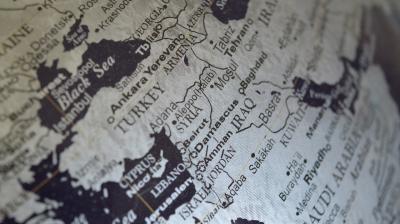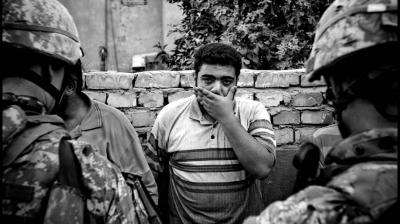The Securitization of Post-2011 Middle East Political Orders
This commentary has previously been published by ISPI (Istituto per gli Studi di Politica Internazionale).
Key findings
- Protests, war, and jihadist revival have created an authoritarian backlash in the Arab states since 2011. In the process, some security forces in the region have splintered but many have stood behind their regimes.
- In doing so, they have morphed from being instruments of protection for the ruling elite to instruments of repression. This has made them even more relevant for the restoration or maintenance of the region’s political orders, but also alienated large social groups.
- This suggests that the next confrontations between ‘street’ and ‘regime’ are likely to be uglier than they were in 2011 – especially as few of the drivers of protests have been adequately addressed. The brutal suppression of protests in Iran in 2019-2020 and Iraq in 2019 serve as a somber example.
By nature, security forces[1] are instruments of power. They exist to defend whoever they serve against violence that others may bring upon them. However, because they command the heights of coercive capability, security forces (especially armies) are also sources of power. They can seize it at any time from those they serve via (the threat of) violence. It is the ability of security forces to act as the ultimate guarantor of political order that ensures they are a driver in the (re)-creation of such order. Yet, security forces are rarely able to stay in power by themselves without large-scale repression of society. This is because such organizations usually lack both legitimacy and the competences required for effective civil rule. Hence, in some cases, security forces operate under the supervision of a civilian authority with greater political legitimacy – the source of which can be democratic, ideological, religious or hereditary (e.g., Tunisia, Jordan, the Gulf countries or Turkey under the AKP). In other cases, security forces exercise control next to, or behind, a civilian government (e.g., Turkey before the AKP, Egypt or Algeria). In other cases still security forces develop a pact with other influential political actors (e.g., Israel, Iran, Syria, Lebanon and Iraq) that turns them into a privileged part of the public sector.[2]
Since security forces are a necessary element of any political order but not a self-sufficient one, the dialectic between necessity and self-sufficiency must be studied to understand the political role that security forces play. The starting point for this essay has to be 2011, when the Arab Uprisings posed a potent and direct threat to the region’s political orders.[3] The Uprisings primarily pitted the underprivileged many against the privileged few, contrasting low levels of public investment in human development with high levels of public expenditure on security forces in the process.[4] More specifically, the Arab Uprisings brought several key pressures to bear onto the region’s political orders and their security forces.
Armies and protests
To begin with, large-scale expressions of discontent with existing regimes created situations in which security forces — armies especially — became essential to regime survival overnight. Otherwise put, mass discontent compelled armies to make a choice between standing down to enable radical change of the political order (Tunisia, initially Egypt), standing behind the existing political order (e.g., most Gulf countries), intervening to protect ruling elites when necessary (e.g., Syria, Bahrain, later Egypt), or fracturing if their organizational cohesion was too weak (Libya, Yemen and, to some extent, Syria).[5] Many security forces stood behind their regimes.
The ´jihadist revival`
The ensuing mix of crisis, violence, and repression subsequently facilitated a ‘jihadist revival’[6] that followed the initial street protests. In a sense, it continued these protests in a different and more virulent way, mixing both domestic and foreign elements. The jihadist revival expressed discontent through radical violence couched in the transnational language of extremist and religious identity. This was a far cry from the protest language of “rights for all”, but both militated against the same shortcomings of the region’s pre-2011 political orders. As the Algerian writer Kamel Daoud put it: ‘jihadi’s are the children of dictatorship, not of revolution.’[7] While protestors and jihadi’s offer very different solutions, these are equally radical from the perspective of incumbent authoritarian and clientelist elites, as well as those parts of the population that support their illiberal rule.
Nevertheless, extremist violence was a godsend to all those political orders that were in the throes of change because it threatened both the population and the regimes. In other words, by re-uniting pro- and contra-reform actors, it relegated calls for political reform to the background. The jihadist revival also strengthened the relevance of security forces across the region as these could now re-claim protection of the people as well as the regime, re-legitimizing themselves in the process (consider the hero-like status of the Lebanese or Iraqi army in the fight against violent extremist groups). However, this re-legitimization is partial since many jihadis are typically also fellow citizens. Repressing or fighting jihadi’s without improving the quality of governance and life at the same time – consider the cases of Egypt or Libya – is likely to deepen social ruptures and produce more jihadi recruits, creating a vicious cycle fraught with moral hazard.[8]
Moreover, the jihadist revival fitted seamlessly into the ‘war on terror’ narrative. This often allowed US-friendly incumbent political elites to play the terrorist card to get away with large-scale human rights violations and ensure continued US military assistance (even President Assad managed to accomplish the first part). Calls for political reform from the street were quickly forgotten in an all-consuming fear of violent Islamic militancy.
Authoritarian backlash
Finally, protests, war, and jihadist revival created an authoritarian backlash led by the Gulf states. It took place in a context of rekindling rivalry between pro- and anti-US forces in the Middle East. The effect of this development on the role of security forces across the region was profound but not identical. Security forces of states that had weathered the Arab Uprisings without civil war (e.g., Jordan, the Gulf States, and Egypt) gained in status as protectors of ‘their’ political order against both domestic and international security threats. In contrast, security forces of the states that got mired in conflict ceased to exist as coherent organizations (e.g., Syria, Yemen, and Libya). Moreover, their separate elements often engaged with foreign powers to advance the interests of aspiring commanders, political parties and/or political brokers, as was already the case in Lebanon and Iraq. In a sense, such fragmented security forces became a mix of mercenaries, proxies, and professionals. This increased the influence of the stronger political orders in the Middle East that emerged relatively unscathed from the Arab Uprisings. It also ensured that the security forces of these stronger orders were drawn into protracted conflicts fraught with reputational risks and with no exit in sight (consider Iran in Syria, Saudi Arabia in Yemen, or the Emirates in Libya).
The current state of affairs
Covid-19 has deepened the socio-economic problems that led to the 2011 protests, while authoritarian retrenchment has done little to increase the capabilities of many governments in the region to respond more effectively to such problems. In fact, the destruction of war and accumulated grievances have compounded them in a number of countries.
Together, these developments create a paradoxical dynamic whereby security forces across the Middle East in 2021 are at the same time stronger and weaker than they were prior to 2011. Security forces are stronger in the sense that they have become even more relevant to the restoration or maintenance of political orders given the enduring absence of meaningful reform in much of the region. Yet, they are weaker in terms of having alienated large social groups, including citizens (e.g., Egypt, Algeria, Bahrain, Saudi Arabia, Jordan) and foreigners - due to transnational deployments (e.g., Iran in Iraq, Syria, Lebanon, Yemen), or because they have suffered from costly foreign military exploits (e.g., Saudi Arabia and the Emirates). Over the past ten years, some security forces in the region have splintered but, ultimately, many have stood behind their regimes – shifting from instruments of protection for the ruling elite to instruments of repression.
Therefore, the next confrontation(s) between ‘street’ and ‘regime’ is likely to be uglier than it was in 2011. The brutal suppression of protests in Iran in 2019-2020 and Iraq in 2019 serve as a somber example. It also suggests that the de-securitization of politics in the region, as well as the wholesale reform of security forces, are long-term prerequisites for greater human development, if only to create sounder civil-military relations and building greater public confidence in security forces.
Follow @ErwinVeen & @Clingendaelorg on Twitter.





